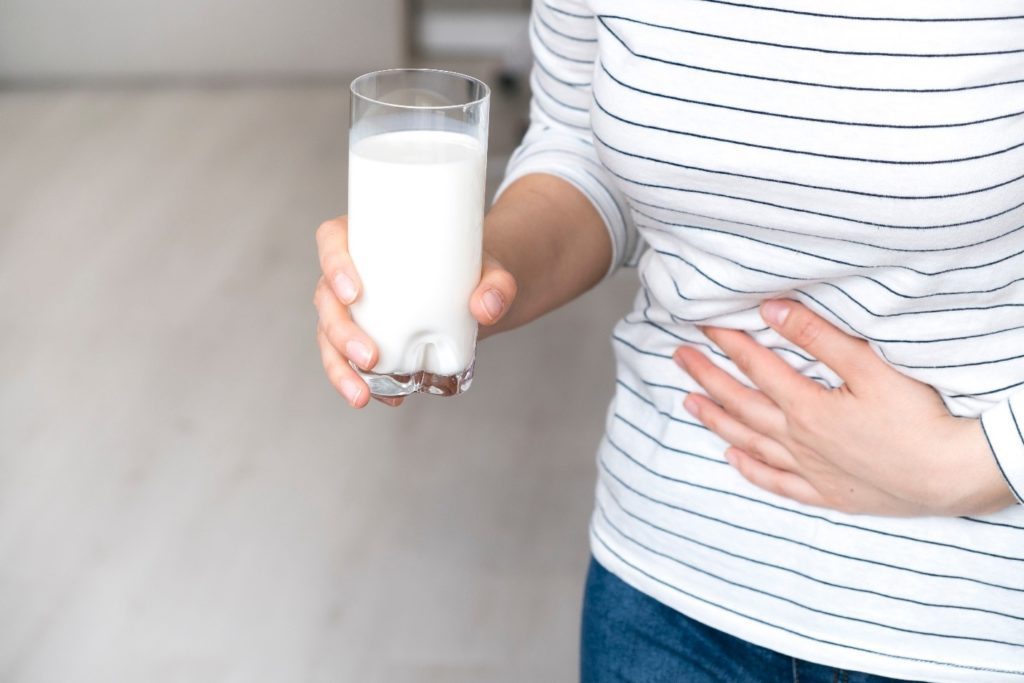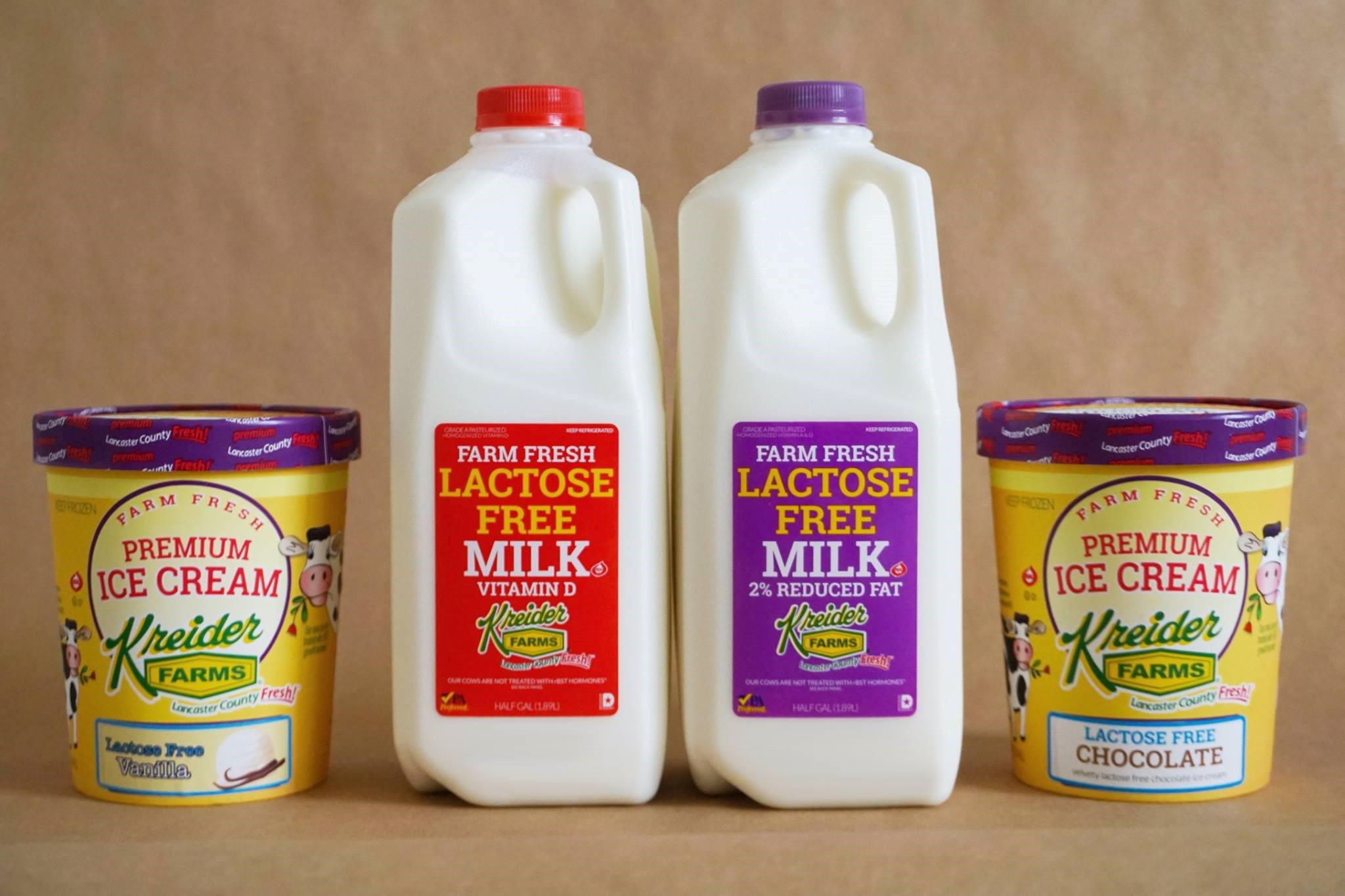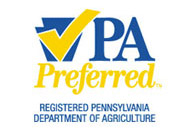
While sensitivity to dairy products that causes digestive upset and other unwanted reactions can have a variety of causes, one of the most common is lactose intolerance. As we talked about in our earlier blog post about living lactose free, up to 75% of adults throughout the world are lactose intolerant to some degree, which means a lot of people end up not feeling well after consuming dairy.
Here at Kreider Farms, we’re extremely troubled that many people feel they can’t enjoy milk, ice cream, and more like they probably once did, which is why we began producing lactose-free dairy items that can be enjoyed by most with lactose intolerance.
But what is this sensitivity that so many people live with? And why is it such a problem, especially for Americans? Today’s post explores these questions and offers a few suggestions on how you can possibly reintroduce real, farm fresh milk and ice cream back into your diet, even if you’re lactose intolerant!
What Exactly Is Lactose Intolerance?
The Mayo Clinic’s overview of lactose intolerance describes the issue simply: people who are unable to fully digest the sugar (lactose) in milk due to a deficiency of lactase—an enzyme produced in the small intestine—are said to be lactose intolerant. These individuals may experience a number of digestive symptoms like nausea, abdominal cramping, bloating, and more about 30 minutes to two hours after ingesting lactose naturally found in many foods and drinks.
Lactose intolerance can be considered “primary”—when it exists unrelated to other conditions or illnesses—or secondary. Additionally, it’s important to understand that sensitivity to dairy may be caused by other, less common problems.
It is possible to have a milk allergy, which can be much more serious than lactose intolerance. Or, you may suffer from Irritable Bowel Syndrome (IBS) with dairy being a trigger food.
Signs and Symptoms You Should Talk to Your Doctor About
If you experience any intestinal pain or discomfort that seems to be connected to consuming dairy foods or milk, you should see your doctor to discuss your concerns. Signs that you may be lactose intolerant include diarrhea, nausea/vomiting, stomach cramps, bloating, and/or gas.
As mentioned, your symptoms could be related to another condition, and any new or worsening health concern always warrants an exam from a knowledgeable medical care provider to help you determine a potential cause.
I Wasn’t Lactose Intolerant Before…Can It Develop Later?
Absolutely. In fact, many people don’t experience lactose intolerance until their youth or even adulthood. Babies can be born lactose intolerant, of course—this condition is known as congenital lactase deficiency or alactasia—but more often, your body’s ability to produce lactase wanes over time. The medical and scientific communities are not entirely sure why lactose intolerance develops later for many people, but research suggests this so-called “lactase nonpersistance” condition is related to genetics.
So, you likely grew up enjoying dairy foods and milk, and suddenly you may feel like they’ve turned on you! This can be very disconcerting, but remember—it’s perfectly normal. In fact, people who can continue to properly digest lactose for their entire lives may actually possess a gene mutation, making them a minority!
Can I Still Eat Dairy Foods with Lactose Intolerance?
The answer to this question will vary by individual, but generally, those with diagnosed lactose intolerance find that they feel best when they avoid traditional dairy milk. However, some lactose intolerant people can continue to eat other dairy foods—yogurt, cheese, and even ice cream—with little or no trouble.
Why avoiding dairy is problematic
It’s not at all simple to entirely cut dairy from your diet, which is why many folks who experience even severe lactose intolerance often attempt to just endure their discomfort without giving anything up. This is mainly because the nutritional benefits of dairy milk are just too difficult to fully replace with plant-based alternatives like coconut, soy, or almond “milk.”
Additionally, here in the US, dairy is a dietary staple that is found in many unlikely foods, as well, like cookies and crackers, salad dressings, sugar substitutes (Equal), and baked goods.
Plus, milk, ice cream, cheese, and other dairy just tastes good!
Kreider Farms Lactose Free Products
The best news for people with lactose intolerance? Dairy producers are sympathetic to your plight, and technical advances in milk processing have helped us to develop lactose-free milk that is delicious, nutritious, and actually comes from cows!

Find our products in stores throughout Central PA, and save on your next shopping trip with our coupons!




